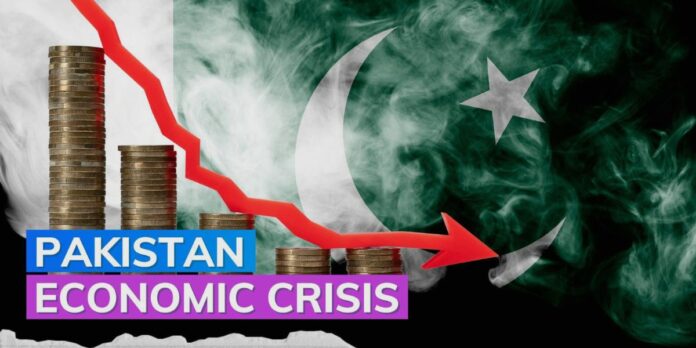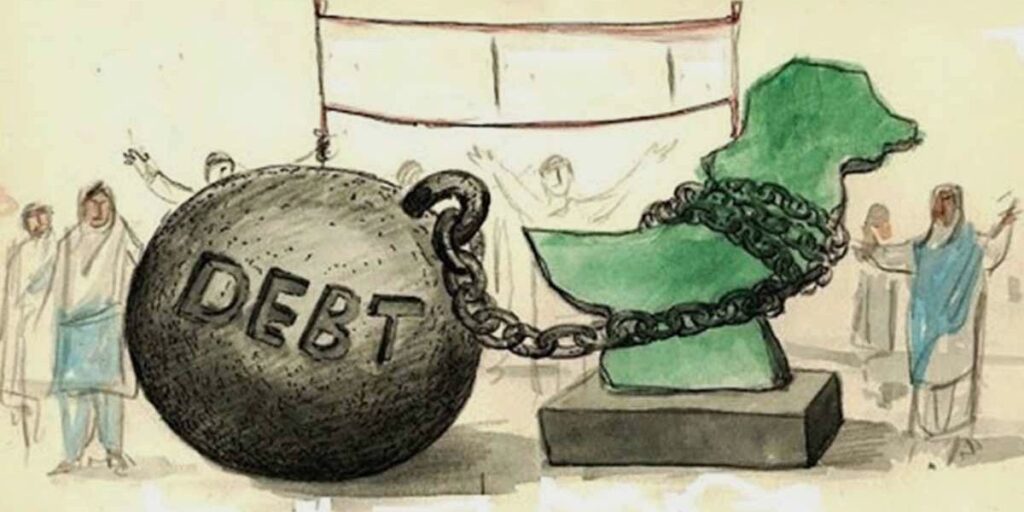Pakistan, a nation rich in culture and natural resources, is currently grappling with an unprecedented economic crisis that has significant implications for its future. The roots of this crisis are multifaceted, stemming from a combination of historical, political, and economic factors that have culminated in a challenging environment for growth and development. This article delves into the various aspects of the Pakistan economic crisis examining its causes, impacts, and potential pathways to recovery.
The Root Causes of Pakistan’s Economic Crisis
-
Chronic Fiscal Deficits and Debt Dependence
Pakistan has long grappled with fiscal deficits, where government expenditures far exceed revenues. This imbalance has necessitated borrowing, both domestically and internationally, to fund its operations. Over time, this reliance on debt has created a vicious cycle. The country’s external debt has ballooned to over $125 billion, with significant repayments due to international lenders such as the International Monetary Fund (IMF), the World Bank, and China. Pakistan has turned to the IMF for bailouts more than 20 times since the 1980s, underscoring its reliance on foreign assistance to stabilize the economy. These loans come with stringent conditions, such as increasing taxes, reducing subsidies, and implementing austerity measures, which often exacerbate domestic economic hardships.
-
Inflation and Currency Devaluation
One of the most visible symptoms of Pakistan’s economic crisis is the soaring inflation, which has crossed 30% in recent months. The Pakistani rupee has also plummeted in value, hitting record lows against the U.S. dollar, exacerbating the cost of imports, including essential goods like fuel, food, and medicine. Energy prices, in particular, have been a key driver of inflation as the country heavily relies on imported oil and gas. The combination of a weak currency and rising energy costs has resulted in higher production costs for businesses, contributing to stagflation — a toxic mix of high inflation and stagnant economic growth.
-
Political Instability and Poor Governance
Pakistan’s political landscape has been marked by instability for decades, with frequent changes in government, military interventions, and power struggles. The political turmoil has hindered the country’s ability to implement consistent economic policies, and corruption within the public sector has further eroded public trust. As political leaders focus on short-term gains rather than long-term reforms, essential sectors like agriculture, education, and infrastructure have been neglected. The lack of continuity in governance, coupled with crony capitalism, has prevented much-needed structural reforms from taking root.
-
Global Economic Pressures
Pakistan’s economic crisis is not occurring in isolation. The global economy, particularly following the COVID-19 pandemic, has undergone significant shocks. The pandemic severely disrupted supply chains reduced remittances (a vital source of foreign exchange for Pakistan), and dampened global demand for goods. Furthermore, the Ukraine-Russia war has increased global fuel prices, directly impacting Pakistan’s import bill and worsening its balance of payments crisis. These external factors have compounded the internal vulnerabilities of Pakistan’s economy, making recovery even more challenging.
Impacts on Society and Economy
The economic crisis in Pakistan has had a profound impact on everyday life, exacerbating poverty, unemployment, and social unrest.
-
Rising Unemployment and Poverty
The economic downturn has led to widespread job losses, particularly in sectors such as manufacturing and services. Small and medium-sized enterprises (SMEs), which form the backbone of Pakistan’s economy, have been hit hard by rising costs and declining demand. According to estimates, unemployment in Pakistan could reach record levels in 2024, pushing millions of people into poverty. The middle class is shrinking, and inequality is rising, with the poorest segments of society bearing the brunt of inflationary pressures.
-
Food Insecurity
Pakistan, despite being an agrarian country, is facing severe food insecurity. The rising cost of foodstuffs, including wheat, sugar, and cooking oil, has made it difficult for many households to afford necessities. The government has struggled to subsidize food effectively, and food shortages in rural areas are becoming more frequent. Malnutrition rates are rising, particularly among children, leading to long-term health consequences for the population.
-
Social and Political Unrest
The economic crisis has fueled widespread discontent across the country. Protests over inflation, unemployment, and energy shortages have become more frequent, and there is growing frustration with the government’s inability to address the crisis. The political environment is becoming more polarized, with opposition parties leveraging the economic situation to gain popular support. This instability further complicates the government’s efforts to introduce reforms and attract foreign investment.
The Road Ahead: Potential Solutions
Despite the grim outlook, there are steps Pakistan can take to stabilize its economy and pave the way for recovery. However, these steps will require political will, international cooperation, and significant reforms.
-
Strengthening Fiscal Discipline
Pakistan must reduce its fiscal deficits by implementing tax reforms that broaden the tax base and improve collection efficiency. Historically, only a small portion of the population pays taxes, and tax evasion is rampant. A more progressive tax system, combined with cutting non-essential government expenditures, could help reduce the deficit and reliance on foreign debt.
-
Diversifying Exports
Pakistan’s economy is heavily reliant on a few key exports, such as textiles. Diversifying into other sectors, including technology, agriculture, and services, could help improve foreign exchange earnings. Encouraging foreign direct investment (FDI) in these sectors, while improving infrastructure and ease of doing business, is critical.
-
Energy Sector Reforms
To address the energy crisis, Pakistan must invest in renewable energy sources such as solar and wind power. Reducing its dependence on imported oil will not only lower costs but also make the economy more resilient to global price shocks. Additionally, improving the efficiency of state-owned energy companies and reducing losses in power distribution could help alleviate the energy burden on the economy.
-
International Support and Debt Restructuring
Pakistan may need to seek debt restructuring from its international creditors to ease its repayment burden. It should also continue to engage with the IMF and other multilateral organizations to secure financial support while ensuring that the conditions attached to these loans do not disproportionately hurt the poorest segments of society.





